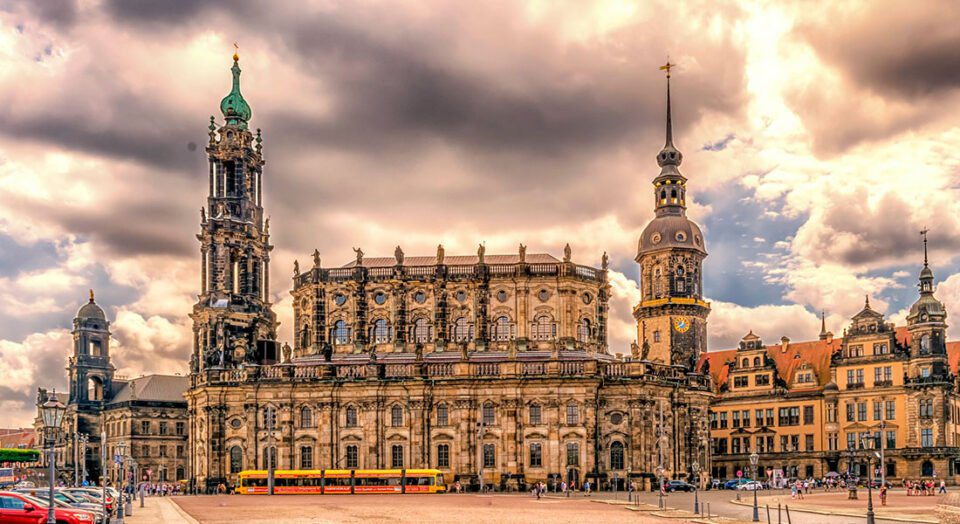Unofficially known as the “Florence on the Elbe,” Dresden is one of Germany’s most beautiful cities. With its numerous architectural landmarks, cultural and historical monuments, and museums, Dresden rivals the famous Florence. This unique city literally rose from the ashes of war to become a center of art in Europe. The many museums of Dresden, carefully restored after the war, leave unforgettable impressions.
Military History Museum
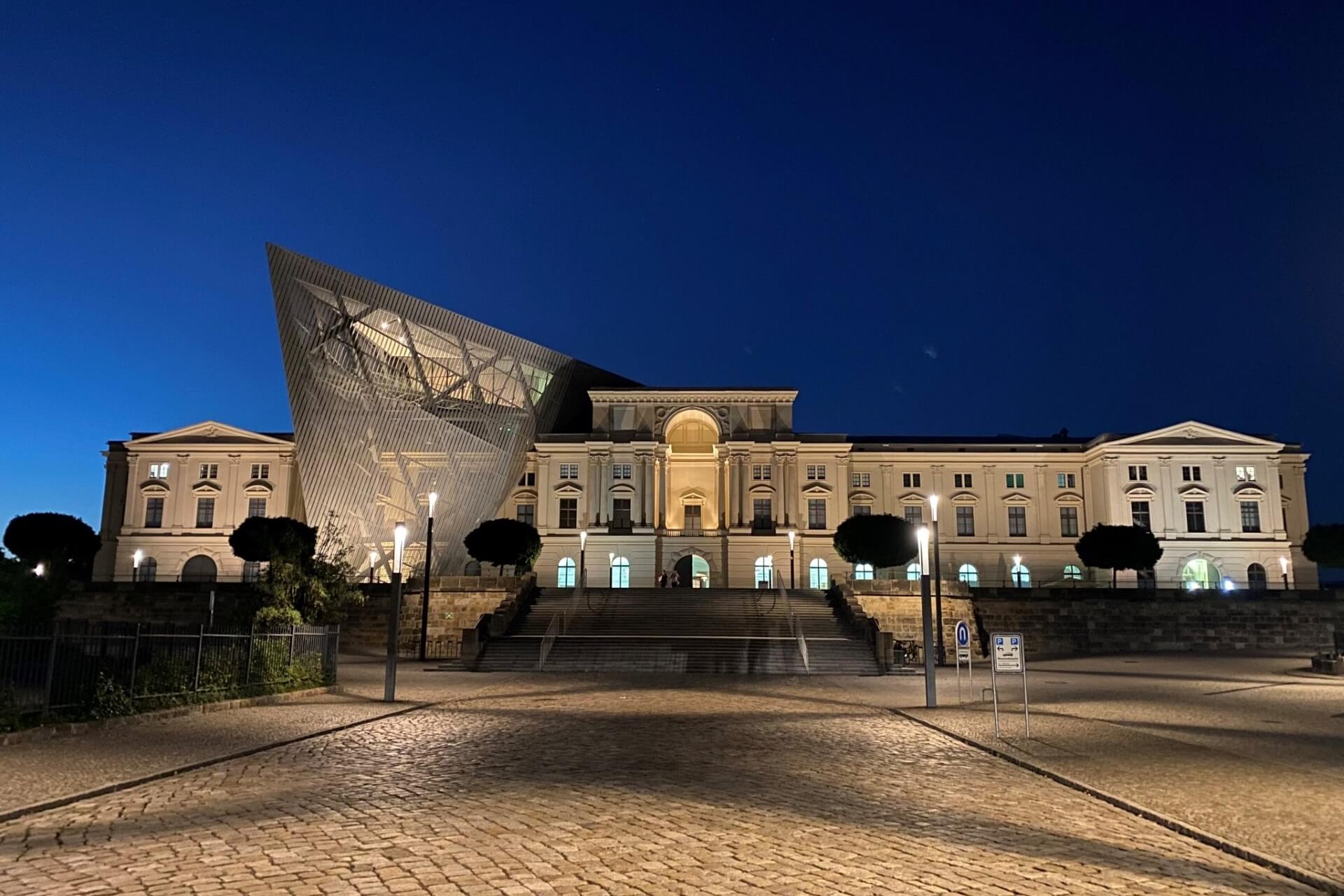
This incredibly interesting museum institution astonishes even with its exterior. The classical arsenal building (1887), in which it is based, appears to be split by a massive metal wedge. This symbolizes the destruction caused by bombings (its tip points to the site of the artillery fire). The content of the exhibitions, covering periods from 1300 to the present, is equally fascinating.
More than 10,000 exhibits are displayed over 13,000 square meters. Equipment of various branches of the military, all kinds of weapon samples, ship and submarine models, archival documents, and photos reflect a seven-century history of military battles. There’s a lot to learn by studying the thematic stands about the specific features of war and its connection with different spheres of society.
Free tours for tourists are conducted on the following days: Monday – Friday (except Wednesday) at 14:00; Saturday – 11:00, 12:00, 14:00; Sunday – 11:00, 12:00, 14:00, 15:00.
Dresden City Museum
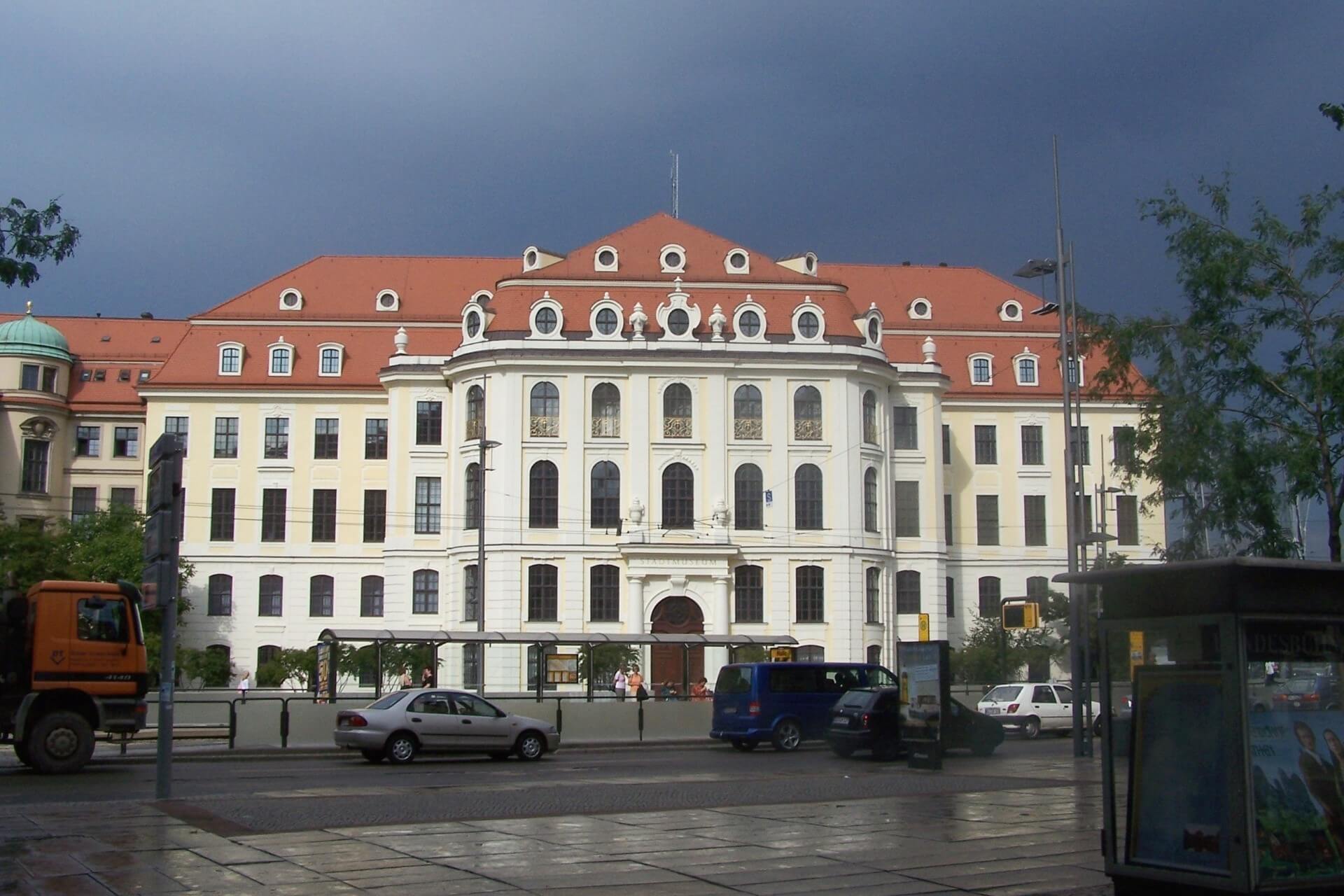
Among its counterparts, the Dresden City Museum is the largest and most significant. Its exhibitions present all facets of the city’s development: history, art, daily life, culture, science, and music. Through 30,000 exhibits, one can get a complete picture of the life and daily routines of Dresden’s citizens across different eras and learn about the lives of prominent figures in Dresden. Many items that have lost their everyday use are displayed. The collections of antique musical instruments, clothing, and weapons are astounding.
No one remains indifferent upon seeing the children’s toys used back in medieval times. There is much to see in the numismatics section – medals of various degrees, old coins, and more. This large institution has a vast collection of scientific documents and inventions, including valuable daguerreotypes, photographs, and postcards showing city scenes from the late 19th to the 1930s.
Opening hours: 10:00 to 18:00 daily, except Monday.
Armory
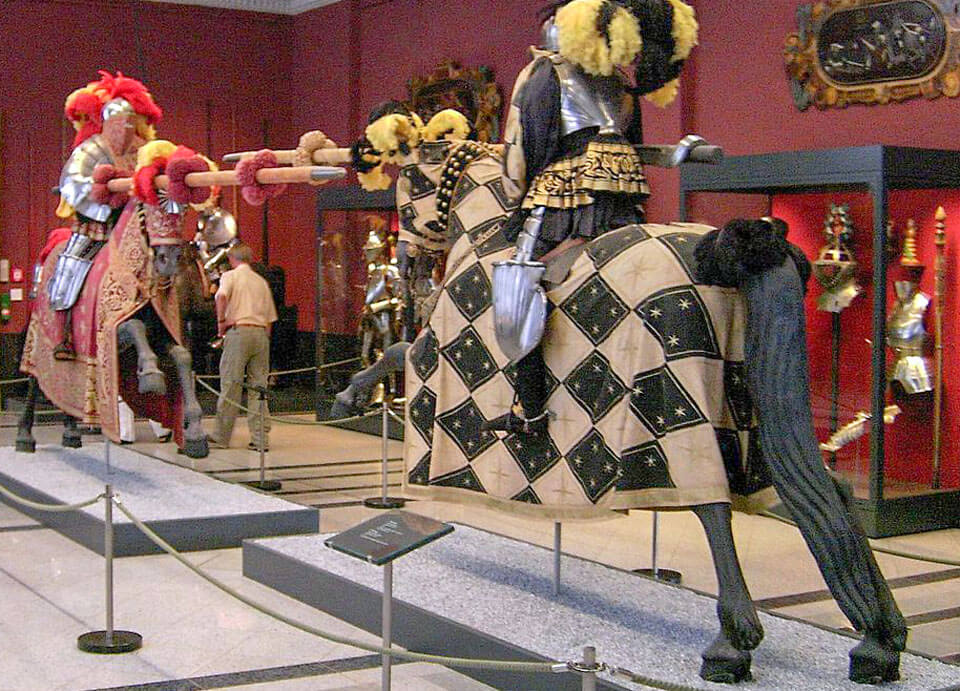
The collection of weapons, military armor, portraits of military leaders, and parade uniforms housed in the Dresden Armory includes more than 10,000 items. Of these, 2,200 are cold and firearms. Sabers, rapiers, swords, daggers, pistols, revolvers, and rifles are all part of the exhibits. The first weapon collector was Duke Albrecht the Brave of Saxony (1443-1500). At the end of his reign, all historical valuables, including weapons from various castles, were brought to Dresden. The weapon collection was housed in the Zwinger Palace in the 19th century and was open for viewing.
After Hitler’s defeat, some exhibits were taken to Leningrad and, after restoration, displayed in the Hermitage. In 1958, everything was returned to Dresden. Today, visitors can see true masterpieces of weapon craftsmanship from the 16th-18th centuries – cold weapons. There are also magnificent examples of firearms (1,400 pistols and 1,600 rifles). The clothing items – embroidered with precious stones, medieval ladies’ dresses, and knight armor – are awe-inspiring. Helmets, armor, and chainmail bear personalized engravings – living history.
German Hygiene Museum
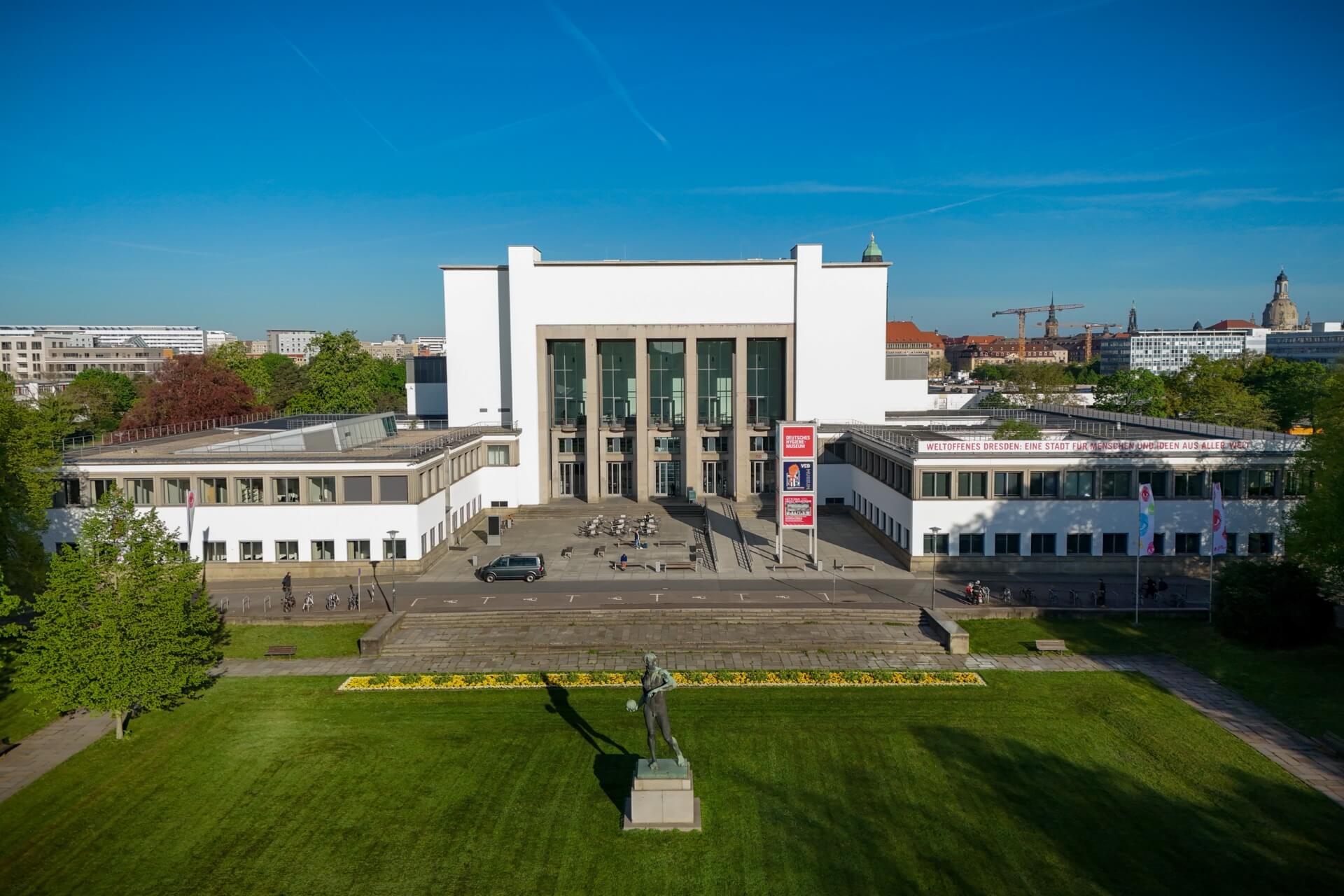
Founded in 1912, this scientific and educational institution was aimed at acquainting citizens with the anatomical structure of humans, hygiene basics, and proper nutrition. The museum building is located on Lingnerplatz, named after its founder, the industrialist and manufacturer. In 1930, a new building was constructed for the opening of the 2nd International Hygiene Exhibition. At that time, the unique exhibit “Glass Man” was created – an excellent tool for studying the anatomy of organs.
The 1945 bombings significantly damaged the museum building, and many exhibits were destroyed. Now, the German Hygiene Museum is hugely popular among children and adults. Schoolchildren visit the “Our Five Senses” exhibition, learning hygiene rules and getting acquainted with the human body’s structure. Visitors can visually see the location and functional interrelation of organs and get to know modern medical devices. Exhibitions, seminars, and conferences are held here.
Opening hours: Tuesday-Sunday (closed on Monday), 10:00 to 18:00.
Transport Museum
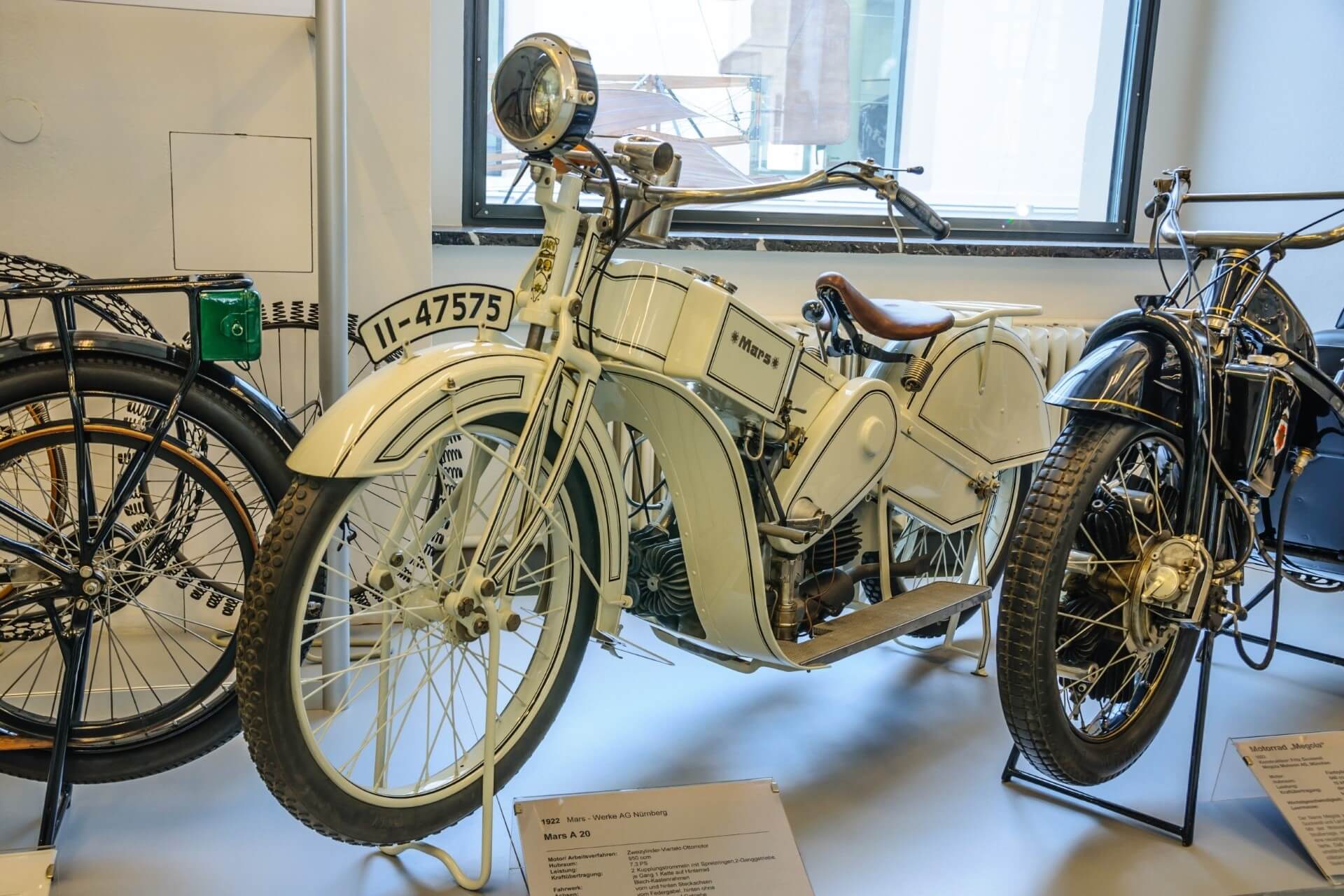
The beautiful Neo-Renaissance building, which today houses various types of transport, has a rich history. In the 16th century, under Elector Christian I, it served as stables. Later, a second floor with large arched windows was added, and a pompous grand staircase was built, becoming an architectural highlight. During the war, railway equipment from the Saxon Railway Museum was stored under the former stables’ roof. This equipment became the basis for creating a new transport museum (1956).
The enormous number of exhibits – samples of various types of transport – impresses and fully illustrates the country’s transport development history. Six permanent exhibitions showcase transport technology for different purposes: cars, railway locomotives, carriages, trams on horse and electric traction, airplanes, bicycles, and motorcycles. Among them are genuine rarities – the first German locomotive “Muldenthal” (1861), a three-wheeled retro car (1886), a glider (1894), the first truck (1927), and more.
Opening hours: Tuesday-Sunday, 10:00-18:00, closed on Monday.
Old Masters Picture Gallery
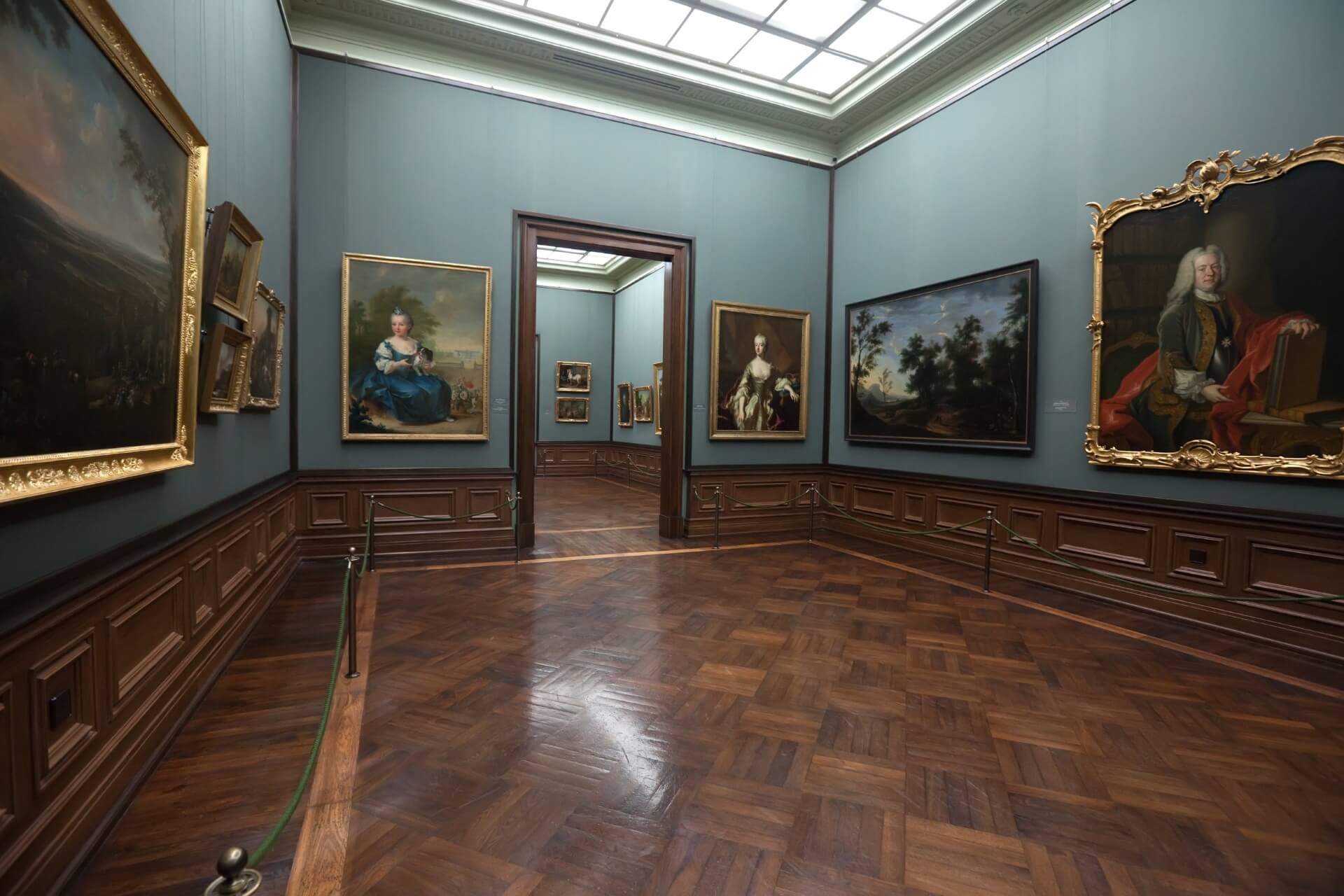
The art gallery with paintings by past masters is located in the beautiful Zwinger Palace. It is aptly named the Old Masters Picture Gallery. The interior decoration is quite simple, with walls painted in one tone, low decorative panels below, and modest bas-reliefs under the ceiling. Everything is designed so that visitors are not distracted from viewing the priceless masterpieces.
The paintings, hung in two rows, captivate the eyes and imagination with their ancient plots, masterful depiction, and unfading colors. The halls feature cozy soft sofas in the center, where visitors can relax without interrupting their viewing. The basement halls showcase the works of Italian painters from the early Renaissance period.
The paintings of Raphael, Botticelli, Tiepolo, Titian, and other representatives of the 16th-18th centuries are displayed on the first floor. Among the paintings is Raphael’s famous “Sistine Madonna.” There are halls dedicated to Rembrandt, Velazquez, Caravaggio, and Van Dyck. Five second-floor halls feature paintings from the 18th-19th centuries. The Gallery reflects all painting directions of the past, from classicism to rococo, captured in unique masterpieces by artists of different European nationalities.
Opening hours: Tuesday-Sunday, 10:00 to 19:00 (closed on Monday).
Porcelain Museum

Even those indifferent to porcelain will be enchanted by the “porcelain kingdom” within the luxurious Zwinger Palace. The collection of items displayed here is rightfully considered the most outstanding in the world for the number of unique exhibits. Only here can you see rare samples of early Meissen and East Asian porcelain.
The beauty of the “white gold” items, the mastery of painting, and the color harmony make them perfect works of art, which one cannot help but admire. The Dresden porcelain collection began with the passionate collector of this precious fragile material, Saxon Elector Augustus the Strong. He fanatically collected Chinese, Japanese, and Meissen porcelain items, and by 1721, there were more than 23,000 pieces. Today, 12,000 exhibits from that time remain.
The most exquisite examples (750 items) are displayed in the Zwinger’s stunning halls, while the entire collection consists of 20,000 exhibits. It’s impossible to walk past the porcelain items made during the reigns of Chinese emperors of the Ming (14th-17th centuries) and Kangxi (17th-18th centuries) dynasties without admiration. The collection of Japanese porcelain by Imari and Kakiemon masters (17th-18th centuries) is also noteworthy. The exhibits of Meissen porcelain are particularly impressive.
Open for visits: daily, except Monday, 10:00-18:00.
Green Vault
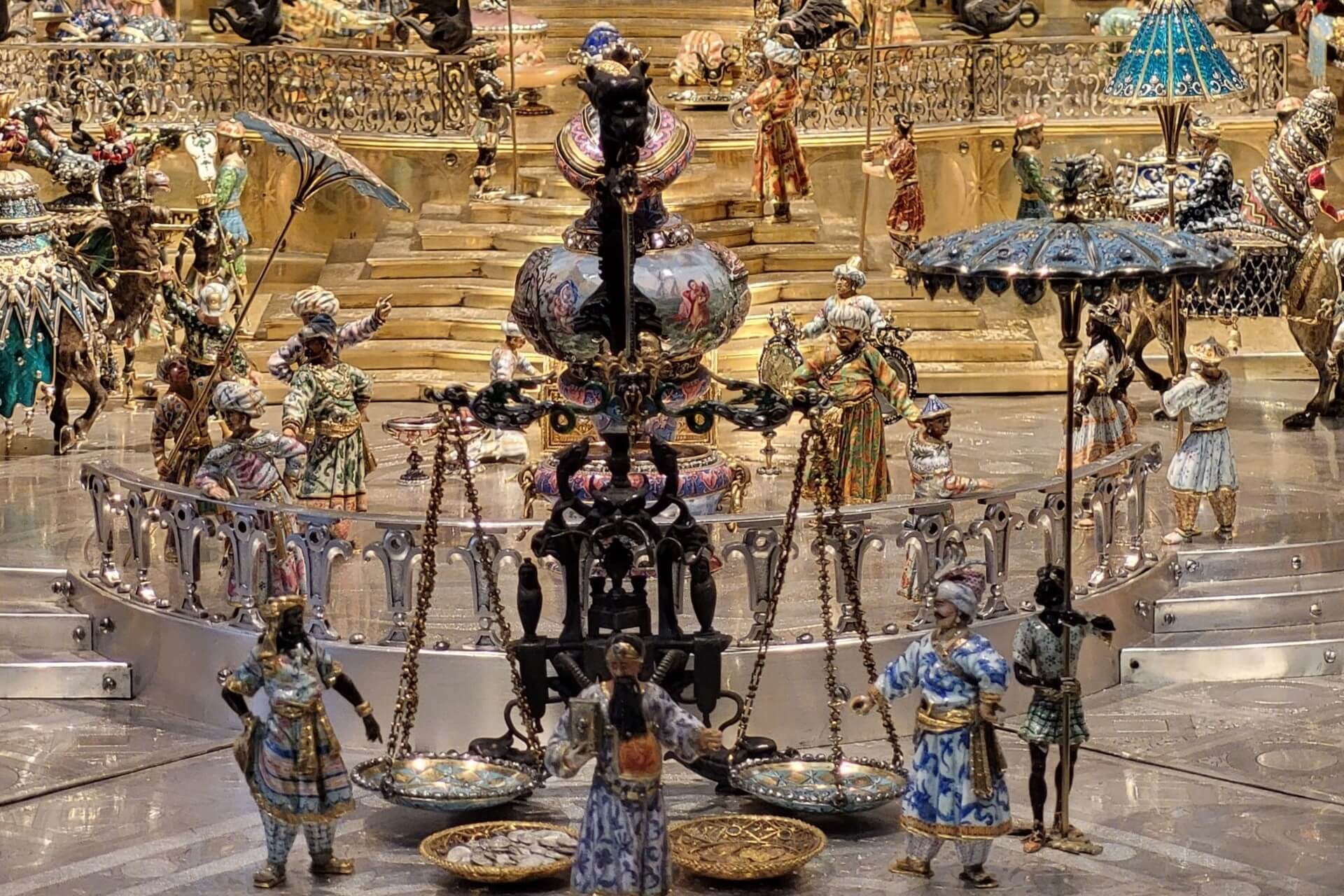
The brilliance of diamonds, gold, silver, and precious stones, the elegance of sculptures, luxurious interior decorations – this is Europe’s richest treasure trove, the “Green Vault.” The exhibits displayed here demonstrate the financial prosperity of the Wettin royal dynasty. Numerous jewelry items, magnificent tableware, interior objects, and portraits impress with their appearance and craftsmanship. The collection contains more than 4,000 exhibits.
The famous Dresden treasure house is located in the former palace residence, whose beauty rivals the collection it houses. The treasury is named after the luxurious malachite columns (now decorated with mirrors) and a huge green diamond stored here. The exhibitions are divided into thematic zones: “Historical Green Vault” and “New Green Vault.”
In Augustus the Strong’s Jewelry Room, exclusive jewelry with diamonds, rubies, and the world’s largest sapphire (548 carats) is displayed. Equally exclusive is the sculpture of a Moor, carved from pearwood and decorated with many precious stones. The Golden Bowl of Ivan the Terrible, inlaid with pearls and sapphires – a gift from Peter I – attracts attention. Each exhibit in the “Green Vault” is a true work of art, providing aesthetic pleasure.
Zwinger
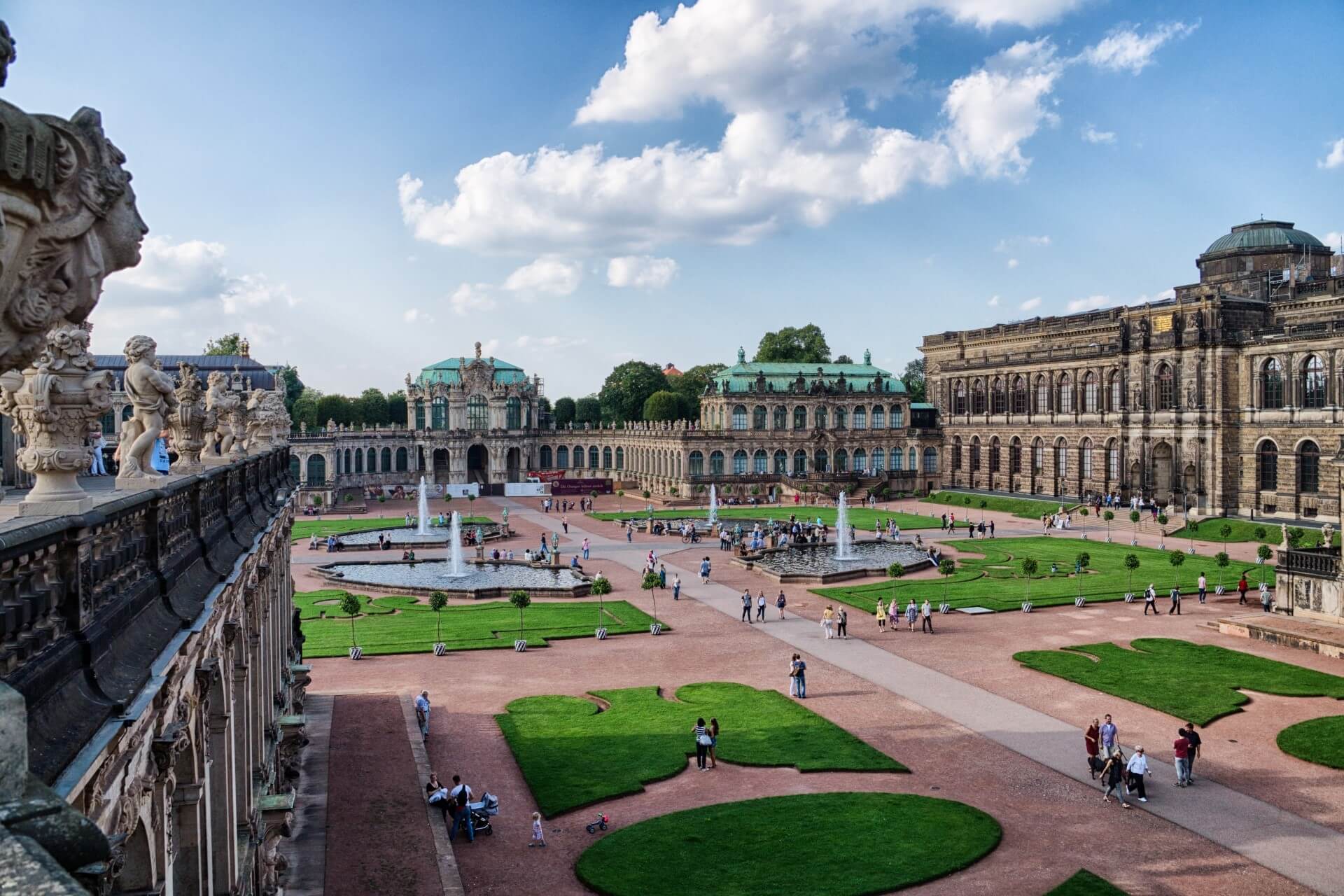
The pride of Dresden, an architectural gem, and the city’s main attraction – the Zwinger palace and park complex was built during the reign of Augustus the Strong. Four magnificent buildings form the inner courtyard square with fountains and flower beds. Built from yellow sandstone in the Baroque style, the palaces are true architectural masterpieces by the famous architect Pöppelmann (1732). The fourth building, in a more austere style, appeared later (now housing the art gallery).
Dozens of antique sculptures, stucco ornaments, arched vaults, lace-like grills, and other decorative elements create the uniquely beautiful appearance of the palaces. The main decoration is the giant gilded crown crowning the main portal. Today, the luxurious halls house royal treasures, weapon collections, and paintings.
The significant symbol of the Zwinger – the Crown Gate, embodying the splendor of the Baroque, is adorned with sculptures of ancient gods and topped with a “crown.” The famous building of the complex – the Pavilion of Journey, with rows of columns, arched windows, and statues, also stands out. Here is the sculpture of Augustus depicted as the mythological Hercules with a globe on his shoulders. Visitors are delighted by the ringing of 40 bells located in the Bell Pavilion. Exploring the Zwinger is an immersion in beauty!
Opening hours: daily, except Tuesday, 10:00 to 18:00.
Albertinum
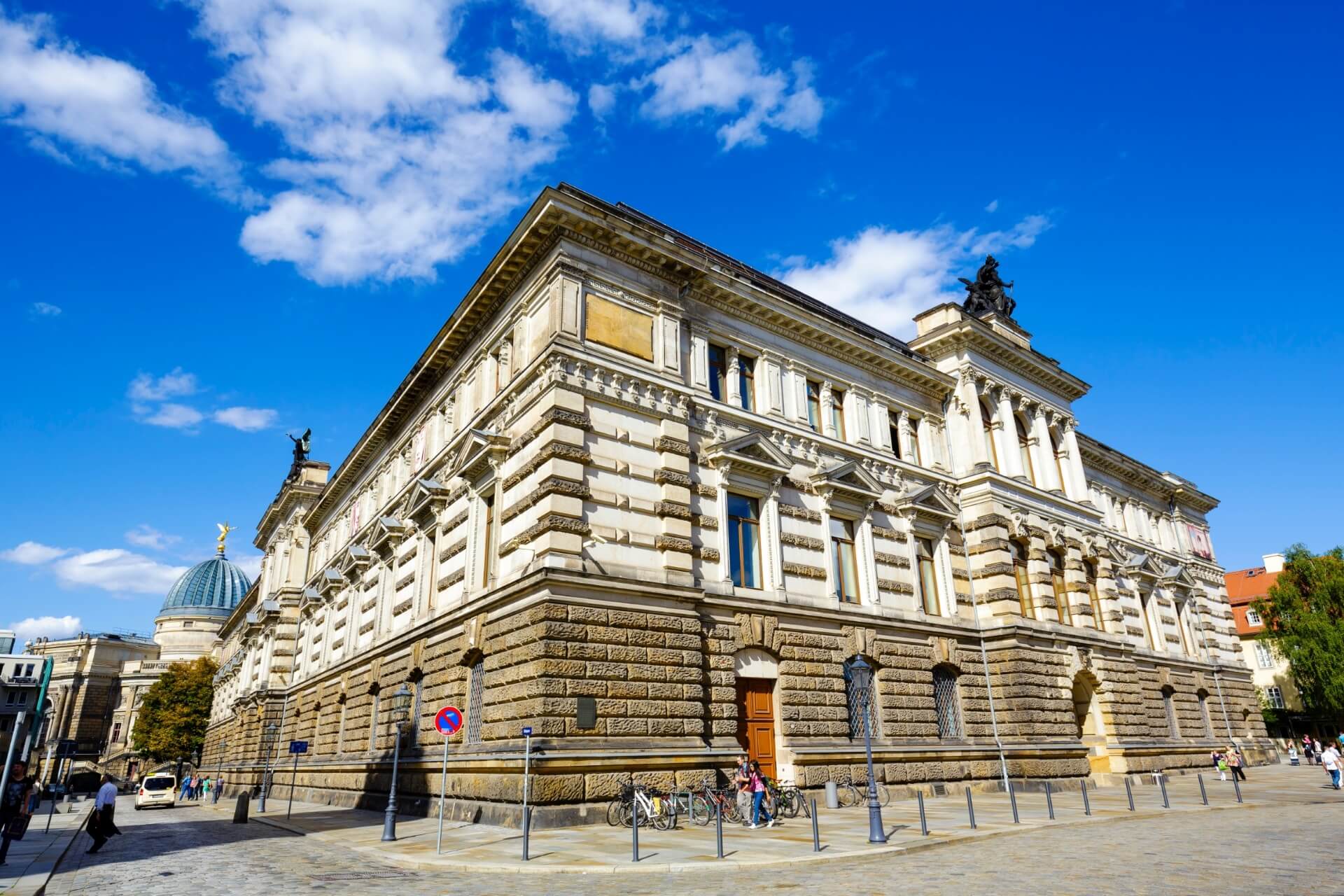
The magnificent old building from the 19th century, named after Saxon King Albert, houses art from different eras. After war damage, the Albertinum was restored in 1953. The severe flood of 2002 caused significant damage, necessitating the reconstruction of the storage rooms. Over four years, the New Albertinum building was constructed, with its inner courtyard called the “Ark of Art.”
The glass walls of the renovated institution can withstand any flood. A two-story annex was built over the inner courtyard, housing the storage and restoration workshops. The atrium of the inner courtyard features cafes, shops, and entrances to exhibition halls. The plan includes holding musical concerts and ballet performances here.
The entrance hall is decorated with antique sculptures, the Baroque sculpture Chronos, and the modern statue “Egyptian” by Rückriem. Such is the credo of the Albertinum – to connect times in art. Therefore, in the Sculpture Hall, Rodin’s “The Thinker” neighbors “Ruins” and the installation “Soul Catcher” by contemporary artists Scheibitz and Dickers. Overall, contemporary works of German art are housed in the New Masters Gallery.
Opening hours: daily, except Monday, 10:00 to 18:00.
Zoological Museum
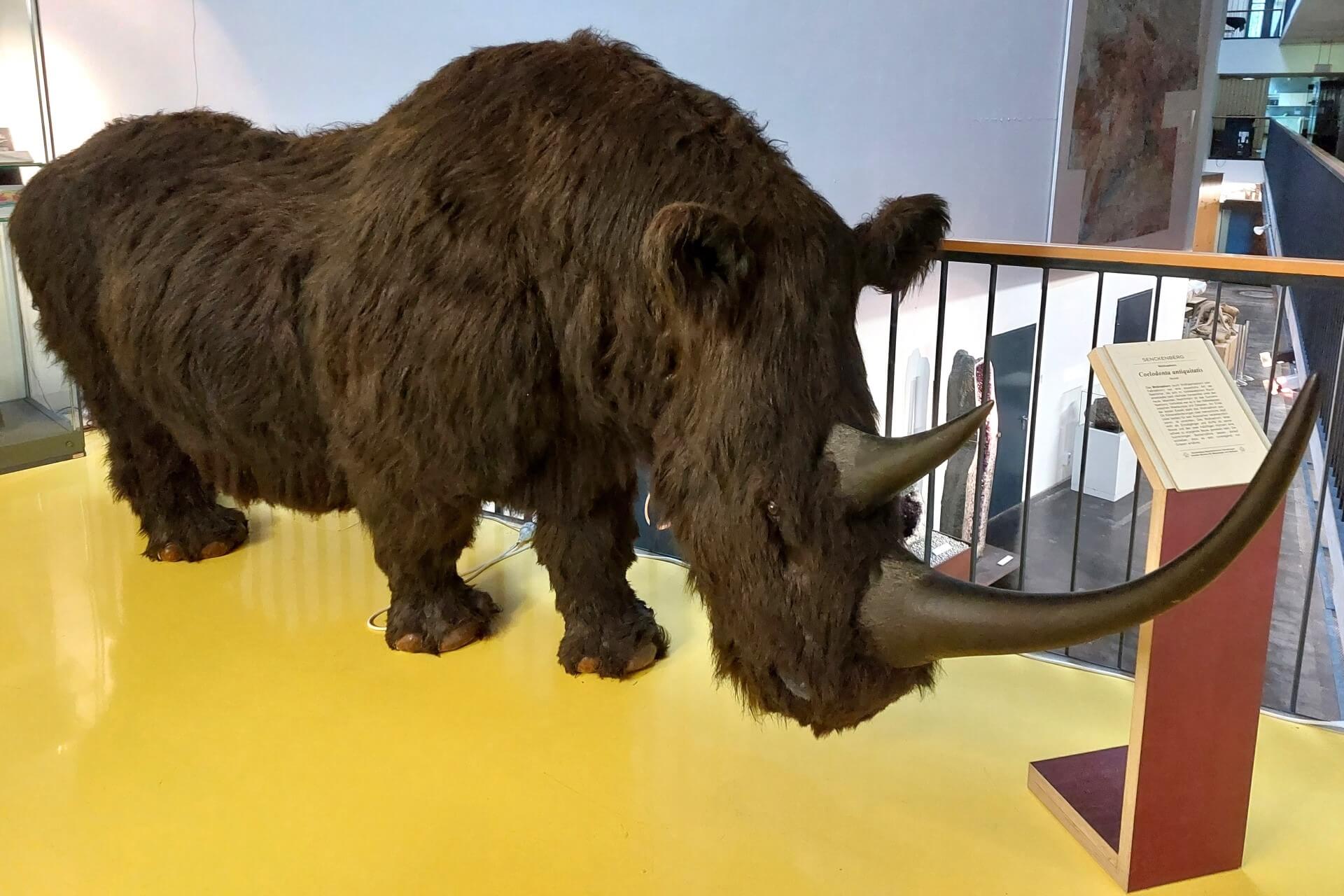
In a quiet corner of Dresden’s picturesque surroundings is the Zoological Museum, part of the city’s State Natural History Collection. This is the oldest institution of its kind in Europe, opened in 1728. By order of Augustus II, one of the buildings in the Zwinger was provided for the new collection. The first exhibits were 16th-century finds collected by the Elector for the Kunstkammer.
After the famous fire in the Zwinger, they were almost entirely destroyed. The museum’s director, Reichenbach, spent six years restoring the collection, and in 1857, the exhibitions reopened to visitors. When the renowned scientist-anthropologist and ethnographer Meyer headed the museum in 1874, he classified all the objects, distributing them by significance.
Three departments acquaint visitors with vertebrates, insects, and invertebrates. Three departments – the preparatory room, molecular-genetic laboratory, and library – conduct scientific research. Six million exhibits: vertebrates (231,000 specimens), insects (2.5 million beetles alone), and many unique objects are displayed in the exhibitions of this fascinating natural history institution.
Opening hours: daily (except Monday), 10:00 to 18:00.
Ethnographic Museum
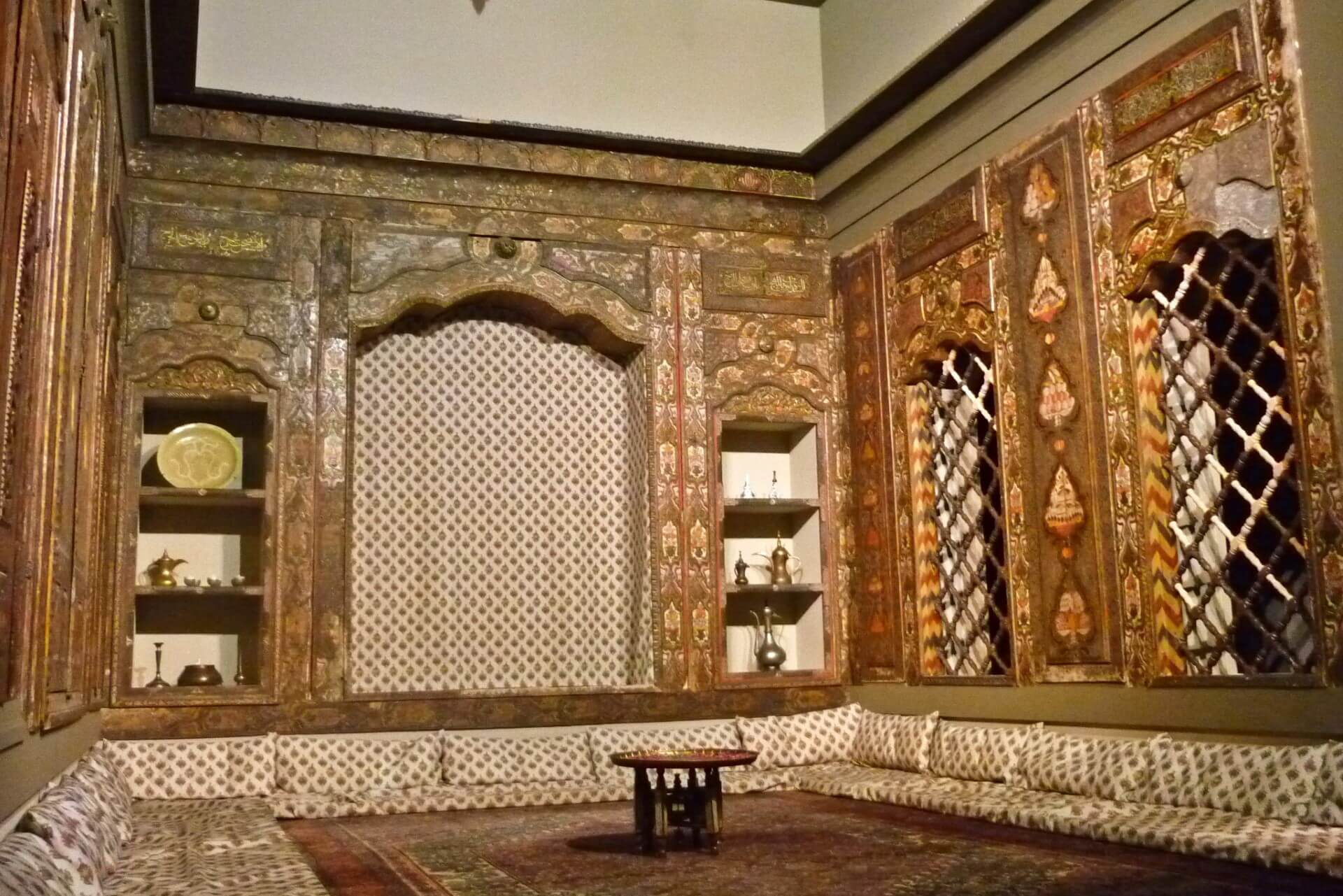
In the central district of Dresden, in a beautiful garden with red gravel paths and a lovely landscape, stands an unusual building in Japanese style – the “Japanese Palace.” This worthy 18th-century architectural monument houses the Dresden Ethnographic Museum. The institution’s origins date back to 1560, when Elector Augustus established a “cabinet of curiosities” to collect interesting items brought from different countries as gifts.
The Ethnographic Museum officially opened in 1954. Today, the museum’s collection contains nearly 90,000 items and 70,000 photos and documents. Beautifully designed exhibitions introduce the history, daily life, and culture of people from five continents: “Australia and Oceania,” “Africa,” “Asia,” “America,” and “Europe.” The most unexpected and astonishing exhibits illustrate the fascinating traditions and lifestyles of different peoples.
Open for visits: daily, except Monday, 10:00-18:00.
Panometer Museum
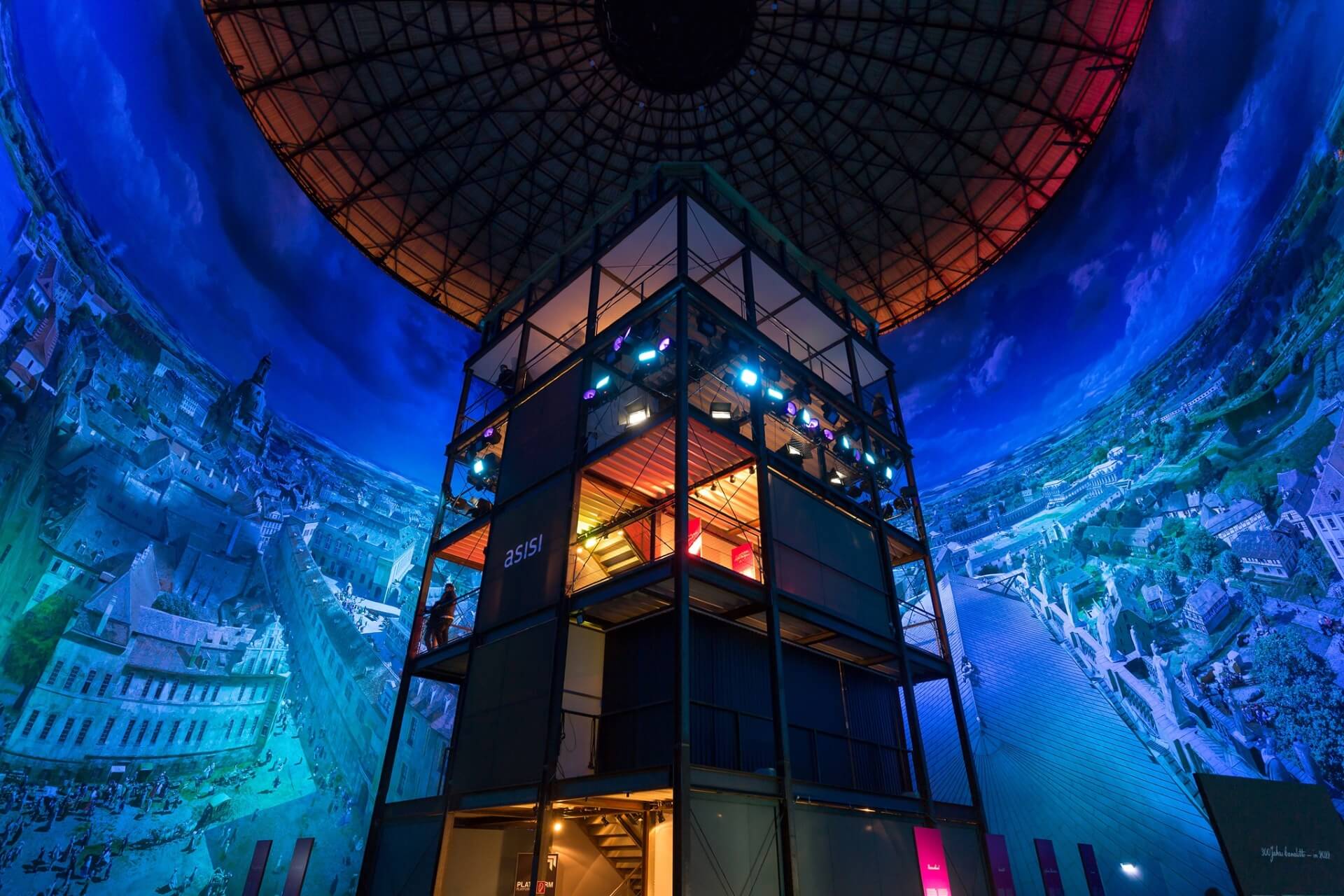
The city’s most original educational and entertainment institution, “Panometer,” opened in December 2006 in a former gas storage building. The fantastic panoramic exhibition was arranged by the architect, an Iranian of Austrian origin, Yadegar Asisi. In the 1990s, he switched from architecture to creating panoramic paintings, producing “Ancient Rome 312” and two other panoramas in Leipzig.
Working on the Dresden panorama, Asisi involved ten historians to accurately reconstruct the city’s appearance in 1756. A documentary film, shown in the “Panometer,” tells about the meticulous work on the project. The panoramic view of Dresden’s Baroque era architecture is captured on a vast canvas (105 meters long, 27 meters high). Magnificent palaces, majestic churches, pompous villas on the Elbe embankment, beautiful gardens, and flower beds seem to come alive before the viewers’ eyes.
Audio and visual aids create the impression of reality. Dawn is depicted with a reddening sky in the east; you can hear roosters crowing, birds chirping, and horses’ hooves clattering. The advancing night is similarly illustrated with evening bell chimes and moonlight strips. The show is accompanied by soul-stirring lyrical music. Here, with a special binocular, you can “look into the windows” of Dresden residents. The “Panometer” is a private museum institution.
Opening hours: Tuesday-Friday, 9:00 to 19:00; Saturday, Sunday, holidays – 10:00-20:00.
Saxon Folk Art Museum
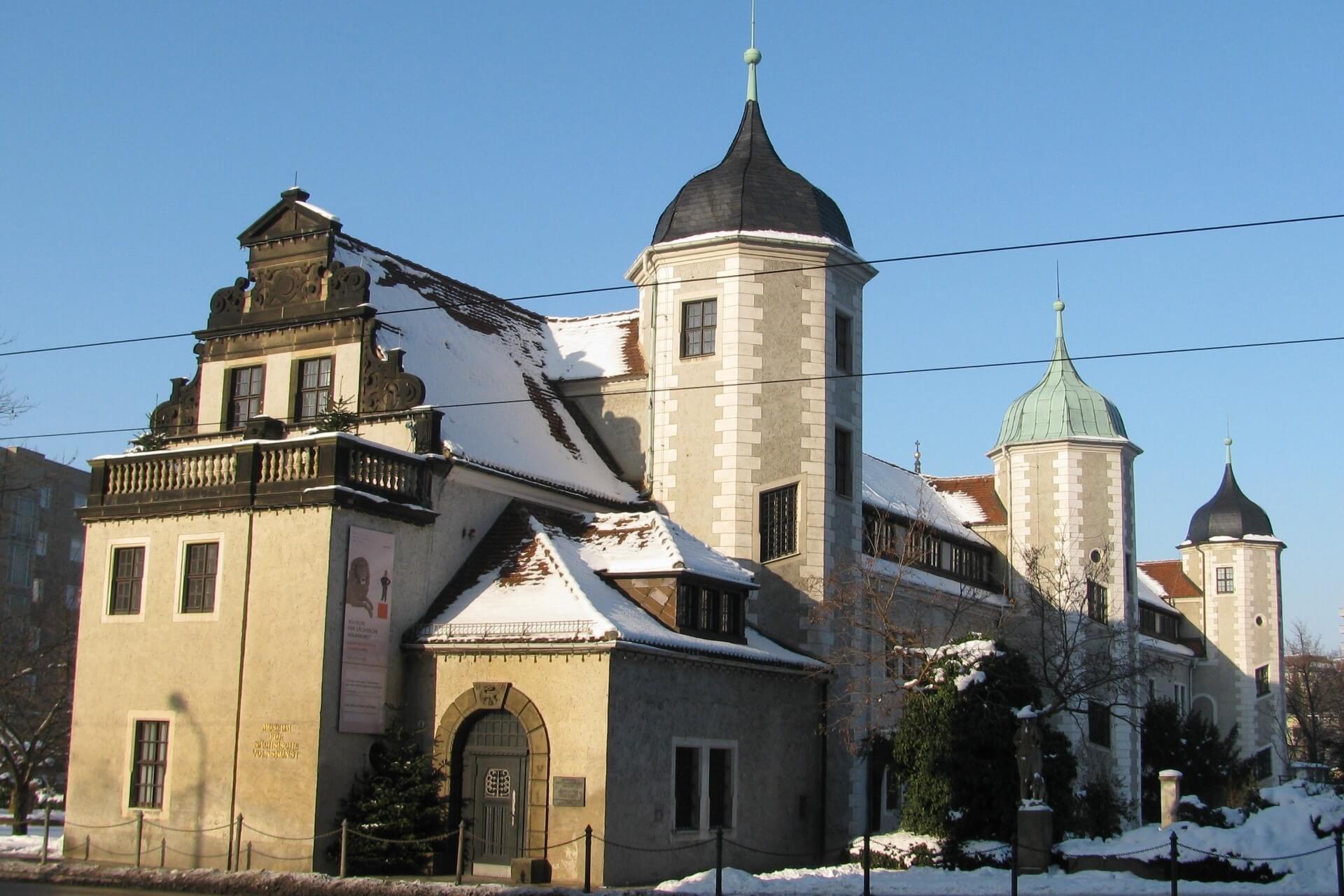
The fame of German punctuality, love of order, and cleanliness is long known, but little is known about national folk art. You can fill this gap by visiting the Saxon Folk Art Museum. It is located in the historic Jägerhof building – a 17th-century architectural monument. Its exhibitions provide a broad overview of the works of carvers, ceramists, lace-makers, furniture makers, seamstresses, and more.
Among the 27,000 exhibits, the picturesque lace panel “800 Years of Dresden,” made with bobbins by virtuoso lace makers, is awe-inspiring. Each handmade furniture piece amazes with its craftsmanship and durability. The wrought iron, glass, metal, and stone items are also impressive. The works of tailors, seamstresses, embroiderers, and doll makers are fascinating.
The unique puppet theater collection – the world’s largest – includes 50,000 items from various European and Asian countries. Marionettes created two centuries ago, theater, glove, and fairground characters handmade – the variety and number are overwhelming.
Opening hours: daily, except Monday, 10:00-18:00.
Japanese Palace
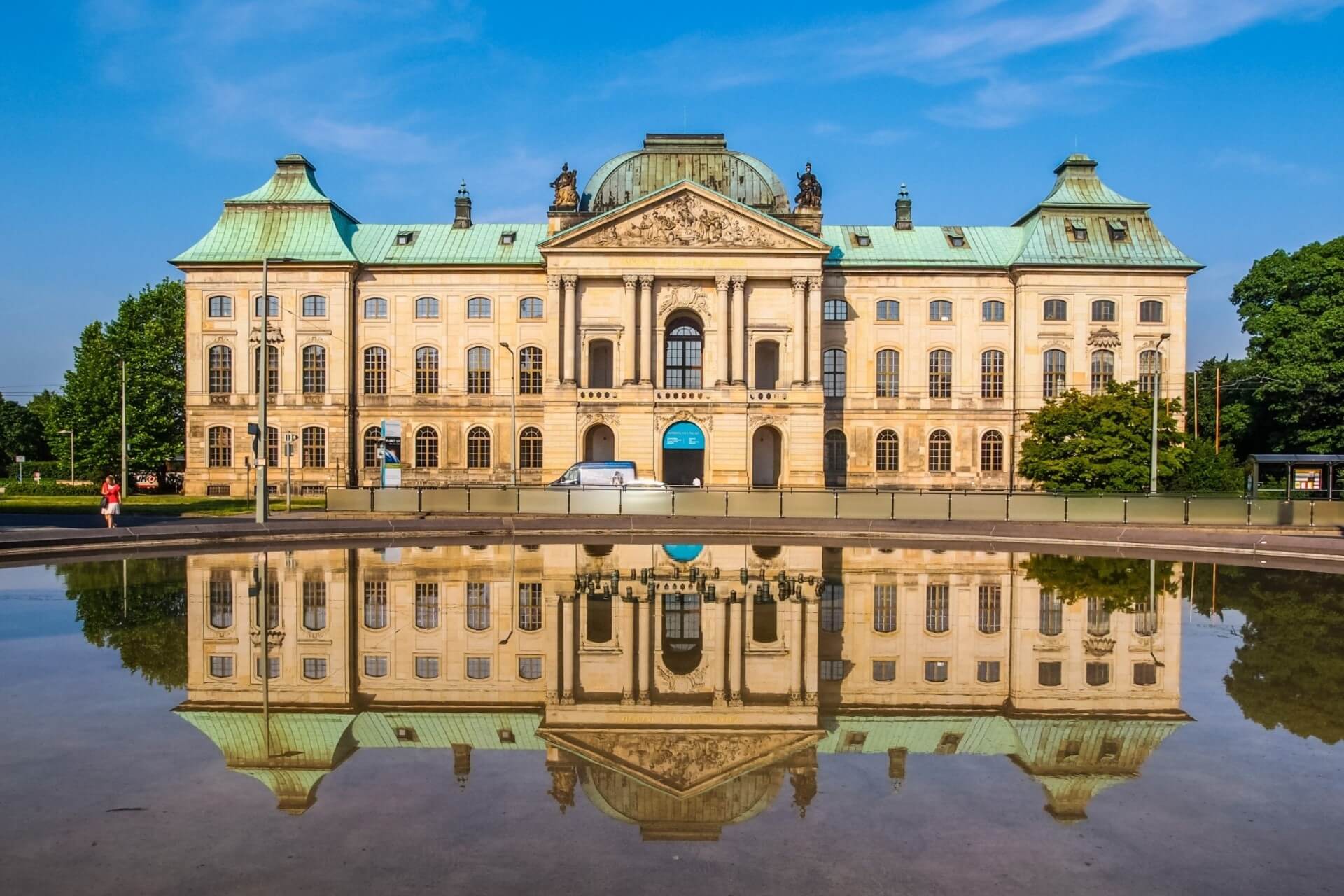
The history of this palace, built for Dutch Count Flemming in 1715, is also related to Augustus the Strong. For several years, the building was called the Dutch Palace until the ubiquitous Elector took an interest. He decided to modify the building with a porcelain roof and interior decoration. The roof was remodeled in Japanese style, the main facade was decorated with a bas-relief featuring Saxons and Japanese making porcelain, and the palace was renamed “Japanese.”
After the famous Elector’s death, the palace became a museum and library space open to ordinary citizens. Like many semi-destroyed Dresden landmarks, the Japanese Palace was restored from 1951 to 1986, returning it to its original 1737 appearance. Every detail, wall painting, and exterior decoration was meticulously restored so that new generations could admire this architectural masterpiece.
Opening hours: 10:00 to 18:00, daily except Monday.
Museum of Applied Arts
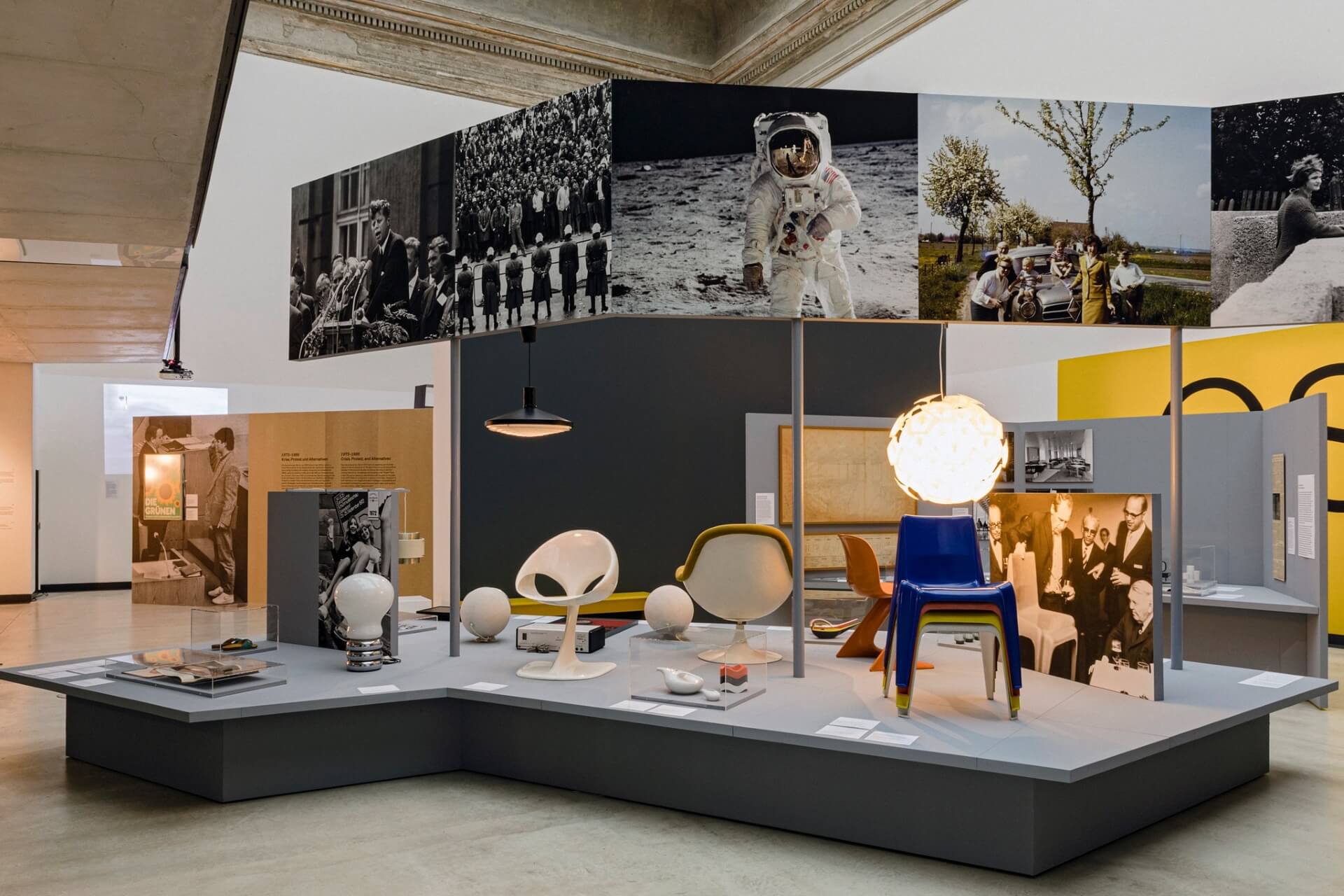
In the former palace residence of the Saxon Electors – Pillnitz, permanent exhibitions of applied arts are held for visitors from May to the end of October. The idyllic landscapes surrounding the residence charm no less than the beautiful buildings – “Water Palace” and “Mountain Palace.” Vineyards and the picturesque banks of the Elbe are attractive factors for tourists.
But the contents of the palace halls also leave no one indifferent. They exhibit items related to the life and daily routines of Saxon rulers, princes, and kings. They reflect the splendor and luxury surrounding their affluent lives and the demands of the powerful. The elegant gilded throne, exclusive silver or lacquered wood furniture, and more are astonishing.
Various Italian majolica, Delft faience, German ceramics, and painted glassware are like works of art. Samples of expensive, exquisite fabrics: damask, embroidered velvet and silk, and beautiful lace are displayed. In recent years, the collection has been enriched with works by contemporary designers worldwide.
Opening hours: from April 30 to November 1, daily, 10:00-18:00, closed on Monday.
Physics and Mathematics Salon
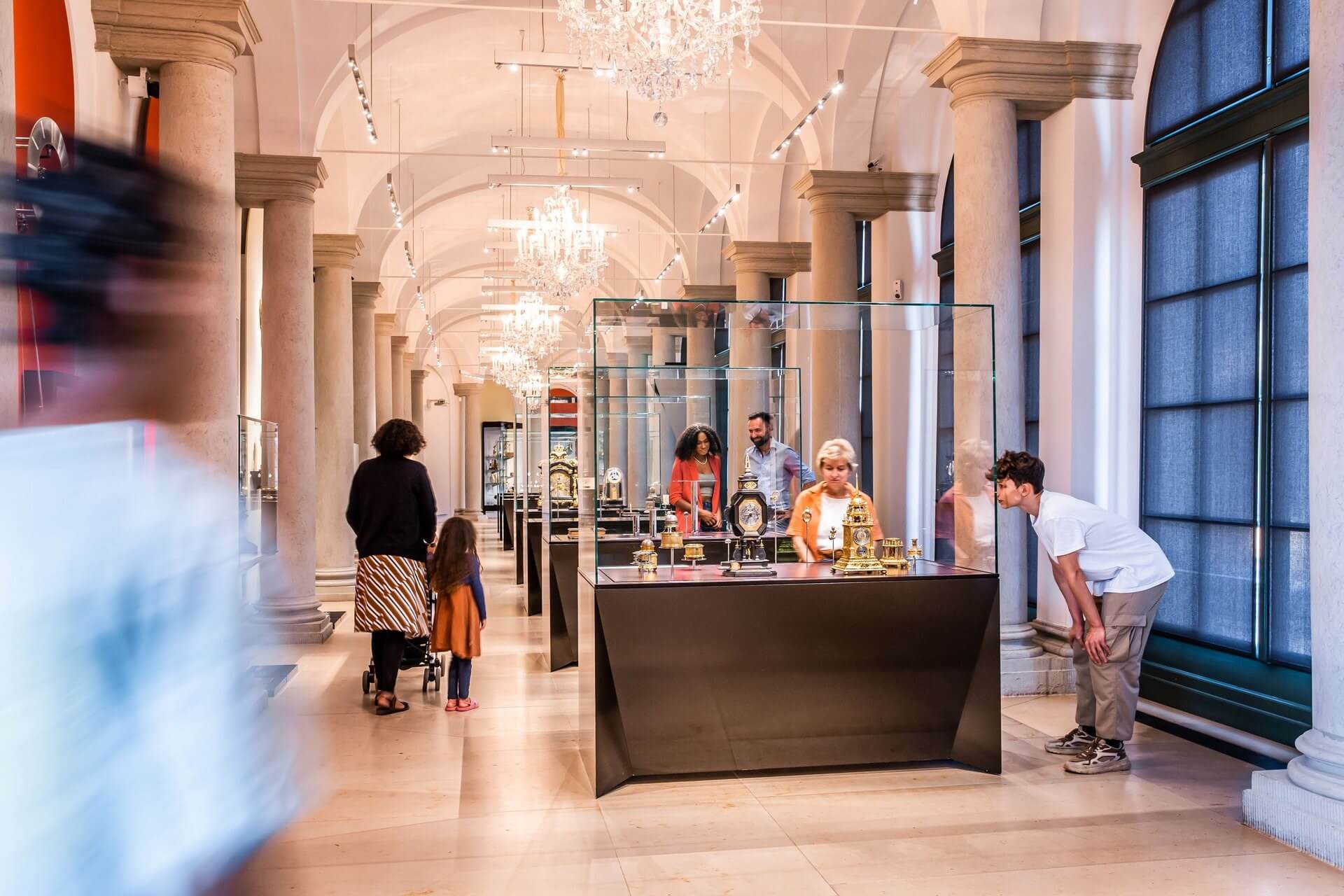
The fact that a scientific salon is located in one of the most magnificent Zwinger palaces speaks to the respect Dresden authorities have for exact sciences. The Physics and Mathematics Salon was founded under the ubiquitous Augustus the Strong (1728-1730). The far-sighted Elector understood that technical progress was unimaginable without exact and natural sciences.
Initially, the museum of natural sciences and graphics was organized on the site of the orangery, becoming the most significant institution of its kind in Europe. It displayed minerals, shells, geological fossils, corals, amber, and scientific materials on anatomy, zoology, and botany.
Today, this institution is called the Physics and Mathematics Salon, featuring over 1,000 exhibits – technical innovations from various eras. The extensive clock collection illustrates the development of these instruments over centuries. Various measuring instruments are shown in chronological evolution: optical devices, geodesy tools, astronomical instruments, drawing and measuring tools.
Open for visits: daily, 10:00 to 18:00, except Monday.
GDR Museum

In a standard Soviet-era building from the 1970s, exhibits tell the story of life in socialist Germany (GDR). The halls house the largest collection of various items, from the smallest attributes to large constructions, illustrating all spheres of state activity and societal life.
This institution may not attract many tourists, but it is undoubtedly fascinating to visit. Its exhibitions embody a historical era full of positives and negatives, optimism and pessimism. Right at the entrance, a Wartburg 311 car (1955-65) is parked permanently, symbolizing the GDR’s automotive industry.
Everything is organized like a quest: visitors can touch the items, listen to TV broadcasts from that era through headphones, and even participate in mock elections or interrogations in a recreated cell. Visitors can open cabinets and drawers to examine their contents. A typical East German apartment is recreated with meticulous detail. Dresden’s effort to preserve this tangible memory of the past is commendable.
Open for visits: Sunday-Friday, 10:00-20:00, Saturday – 10:00-22:00.
Turkish Chamber

The unique collection of Ottoman Empire weapons is famous throughout Europe for its number of exhibits and age. Weapons gifted to the Elector of Saxony in the 16th century are displayed here. Such gifts continued in subsequent centuries, resulting in a substantial collection of military significance. The Turkish Chamber is located in the residential palace, with its interiors providing a harmonious backdrop for its exhibits. The variety of Eastern weapons, including sabers, rapiers, and blades, is noteworthy. Many types of firearms, military banners, soldier and officer uniforms, horse harnesses with decorations, and more are presented.
Opening hours: daily, except Tuesday, 10:00 to 18:00.
Dresden Castle Residence
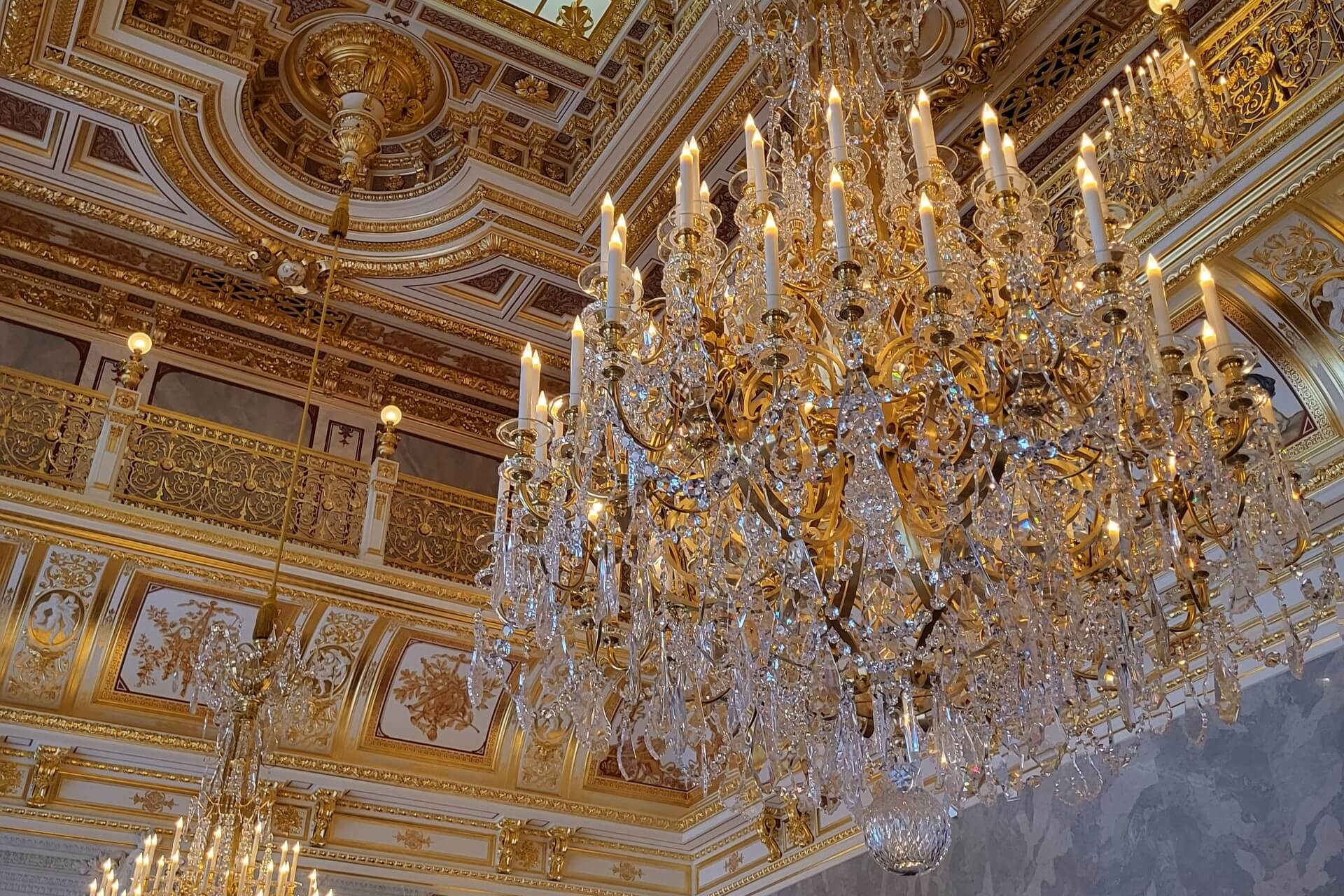
A magnificent adornment of the city, the medieval castle served as the residence of many Saxon rulers. The grandiosity and Baroque splendor, and the Renaissance elegance of the castle buildings, are stunning. According to some accounts, the first fortress appeared here at the end of the 12th century. This is evidenced by the presence of a wooden bridge over the Elbe, later replaced (1289) with a stone crossing.
Over centuries, the castle’s “appearance” changed according to architectural fashion and new styles. New forms of watchtowers, fashionable elements and structures, and various decorations were added. In the 15th century, the buildings acquired Italian features, and new George gates (one of the castle’s highlights) were erected in the 16th century. Much was rebuilt in the Renaissance style.
Today, the palace residence, embodying a mix of several architectural styles, is a visible example of the development of German architecture. This undeniable architectural masterpiece, which acquired its current brilliant appearance through improvements, delights Dresden residents and tourists with its splendid beauty.
Open for visits: daily, except Monday, 10:00-18:00.

